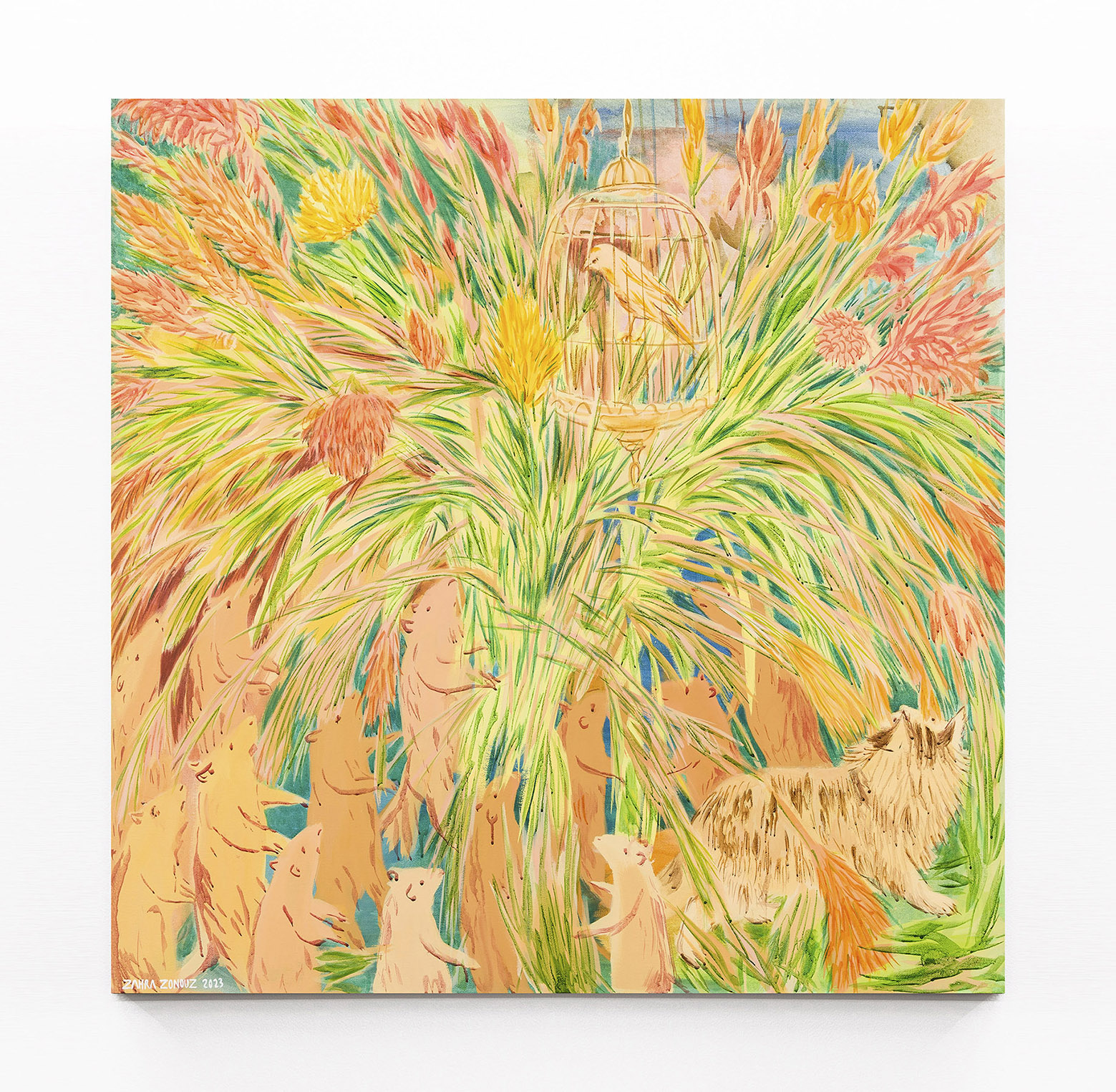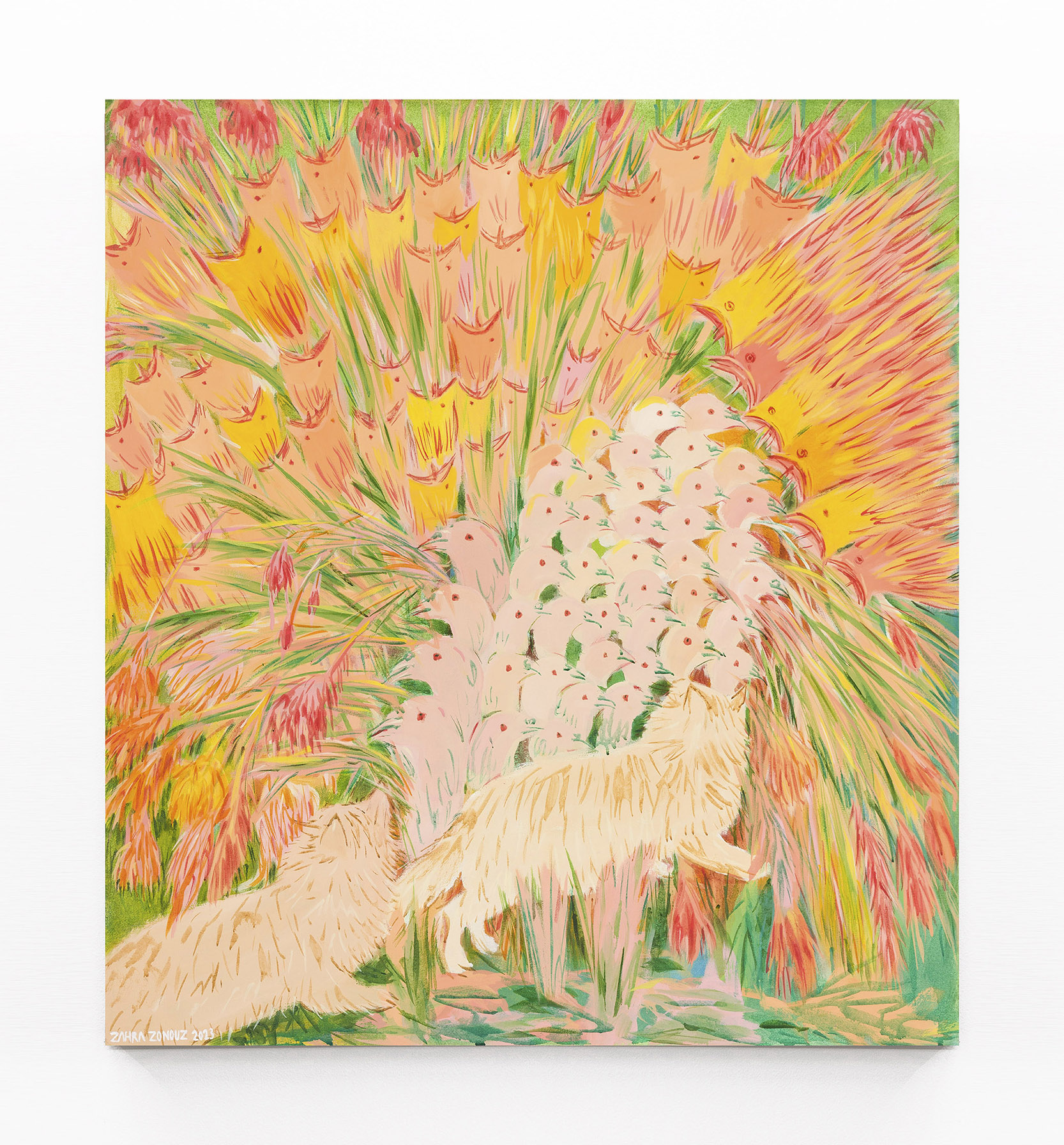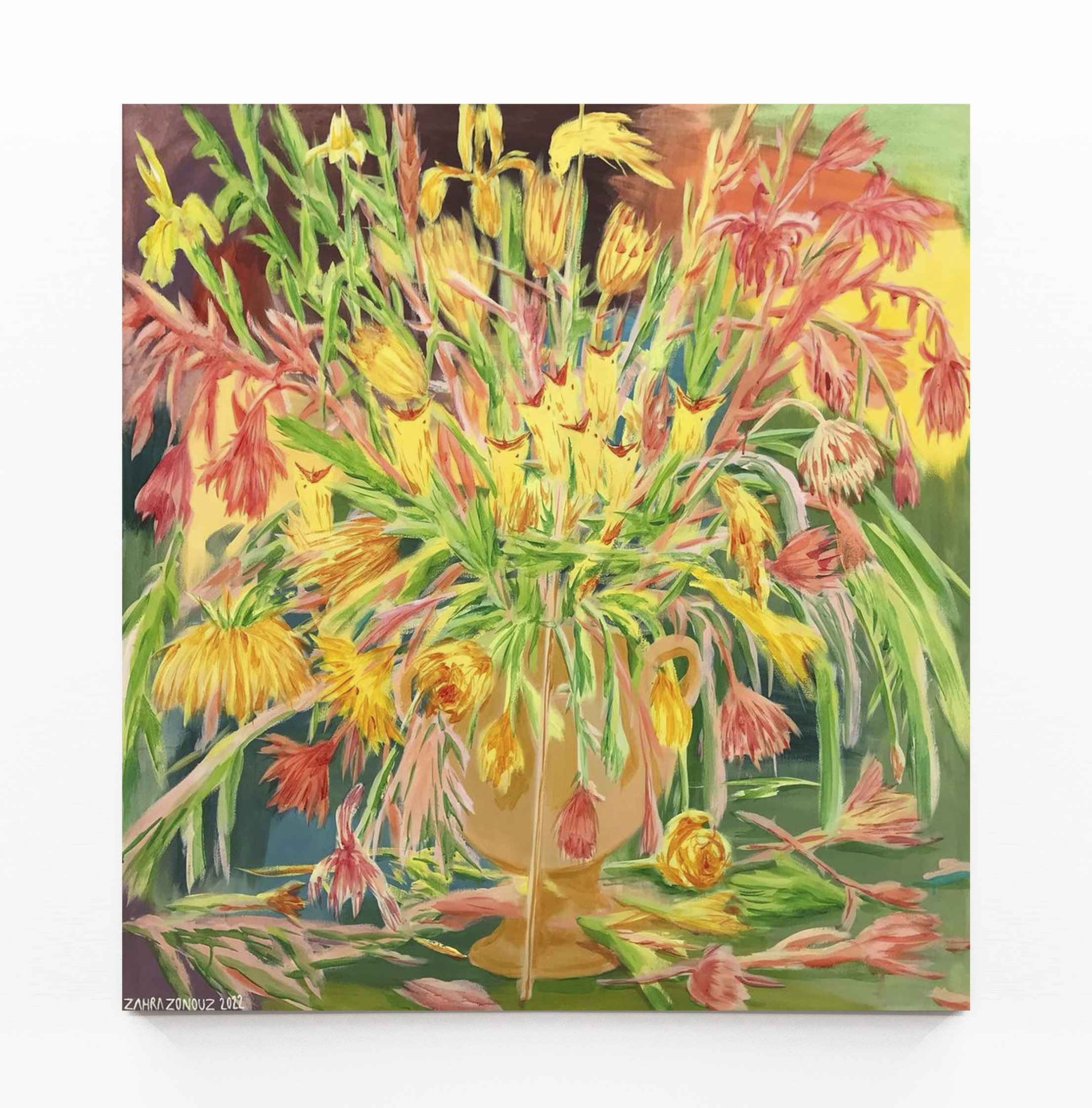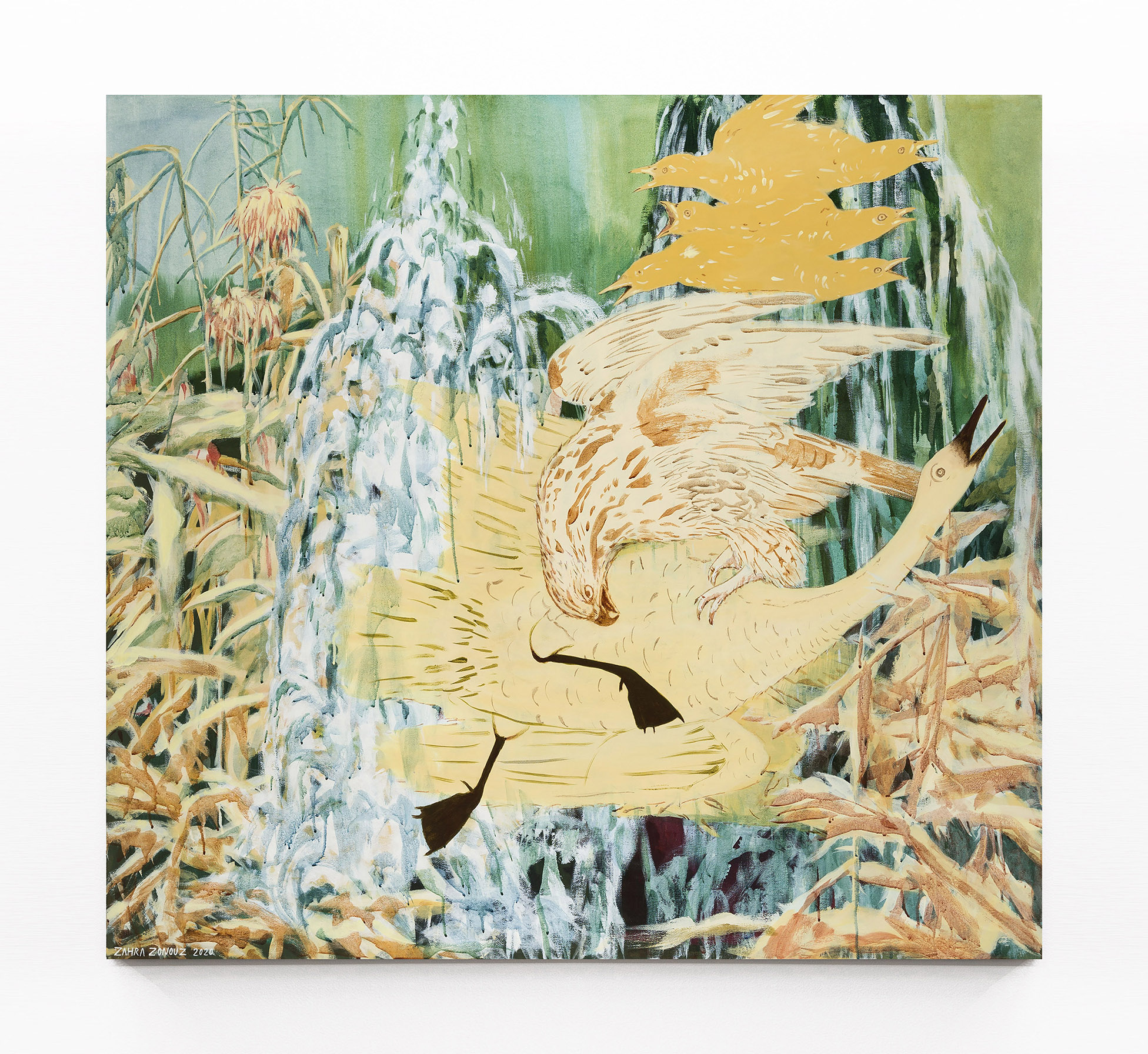BIRDS MICING, CATS BIRDING
Zahra Zonouz
16 JUNE 2023
- 16 JULY 2023
“Afterwards, we spent some time reading the papers with Amin-Khalvat and the special adjutant. Then, we went inside; Shams al-Dawla was reciting a Rawda for men. When we arrived, he, the Bouquet of Violets, was reciting while on the pulpit. And then, we went outside and walked for a while. Near the sunset, we went to the greenhouse to see the gallery, and then returned at dusk. The archer was in the courtyard and we shot some arrows at the beautiful and good-looking Kelardashti birds that were sitting on the branches of the cypress trees. When we arrived at the entrance of the Diwan-Khaneh, a little higher up, we saw another Kelardashti bird sitting on a cypress tree. Although it was dark and the bird was almost fifty steps away, I aimed and shot an arrow at it. We gathered that our arrow hit something soft. We realized it must have hit it. We went closer and the arrow fell down with the bird; we observed that the arrow had hit the bird and had passed through its stomach, skewering it. We were very surprised. Others who were with us and are present here were these: Amin Khaghan, Bashi, Nayeb, Hajib al-Dawla, General, Aziz Khan, Agha Mohammad Khan, and trustworthy people. They were all amazed. Then we took the bird with the arrow still through it, and showed it to the women and everyone was deeply amazed; and we had indeed fired an amazing shot. We wrote this down as a record of today because this interesting event happened.”
Naser al-Din Shah Qajar's note on Saturday of the Qarreh of the month of Rajab al-Murajjab [December 1895] *
The day before, he had had lunch in the Photo Room and then a French doctor had examined his eyes saying “apparently, they are very good”. After the incident, he gave the bird that had been shot by an arrow to the former court painter, and as he put it, “we ordered Kamal-ol-Molk to make it into a painting”. It was a strange day, a perfect day for the king, concluding in him ordering a painting.
The French doctor had told him that his eyes could see perfectly. Perhaps his confidence had been fed from that encounter, resulting in shooting an arrow from fifty steps away, skewering the Kelardashti chaffinch bird. What was the effect of listening to the Rawda that day? “Bouquet of Violets” is such a strange name to give to a reciter! Or the effect of news and reading the papers in the morning and speaking French with the French doctor? And the cold of that day that took the Center of the Universe from the Hall of Kings to the Photo Room to have lunch and enjoy the warmth of the sun-facing hall. Perhaps if he had the patience, he would have painted the poor Kelardashti bird on a skewer himself. He was not unskilled in painting. However, why would the Sultan of Sahebgharan who can order it to be painted spend hours doing it himself? He knows that the idea is his! He could even order the bird own bird to skewer itself and then make a self-portrait!
Naser al-Din Shah Qajar lived much more Iranian than us much earlier than we ever did. That is, he started his mornings with reading the news and hour by hour, newer events came to him or he went to them. But, at that time, access to news was not like today when we encounter catastrophes all the time, paralyzing us. Even the strangest events have become normal and believable. Now, more than a century later, Zahra Noori Zonouz has painted, ordered by herself, the same Kelardashti bird that was shot by an arrow and ordered by the king to be painted by Kamal-ol-Molk, alongside thirty other birds and a cat from the court painter’s paintings.
Shabahang Tayyari, Spring 2023
* From the memoirs of Naser al-Din Shah Qajar, edited by Majid Abd Amin, published by Dr. Mahmoud Afshar Endowment, [1397].
_copy.jpg)
_copy.jpg)
_copy.jpg)
_copy.jpg)
_copy.jpg)
_copy.jpg)
_copy.jpg)
_copy.jpg)
_copy.jpg)
_copy.jpg)
_copy.jpg)
_copy.jpg)









